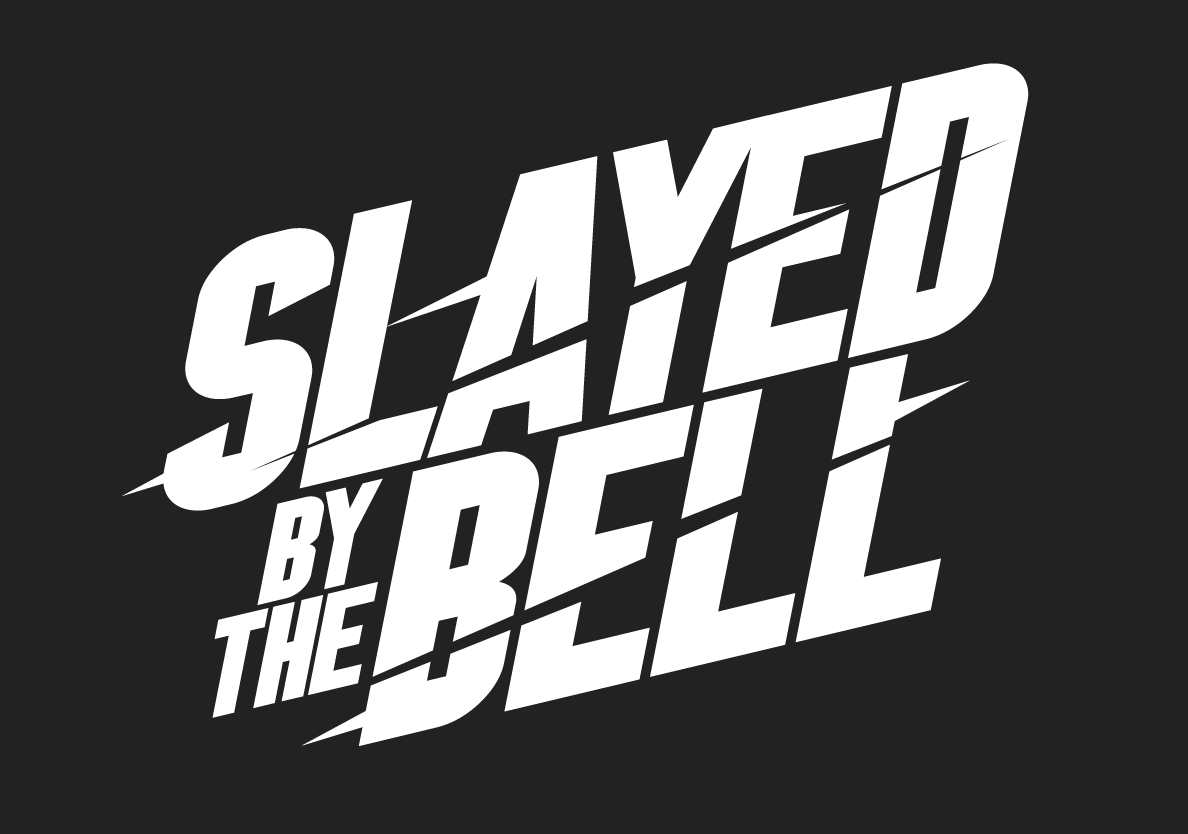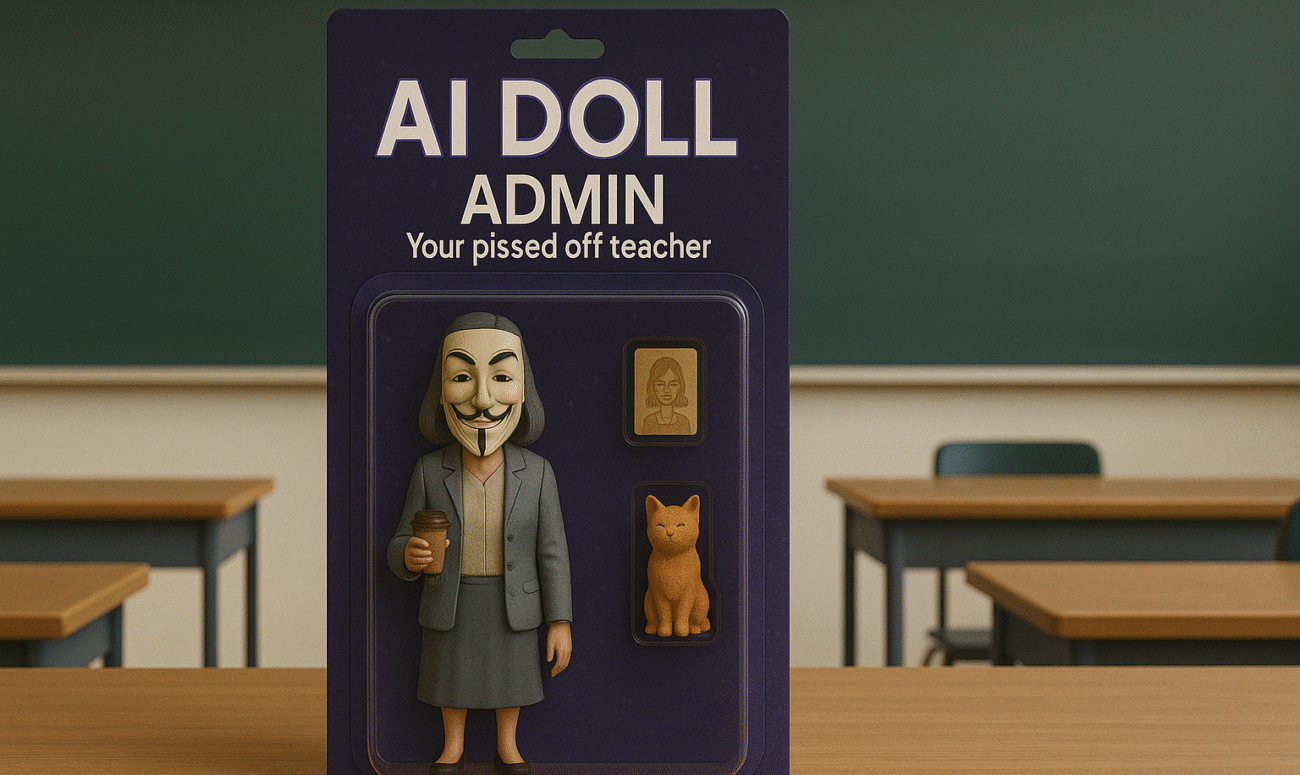Why the AI Doll trend bothers some people, the backlash against the trend, and what it reveals about insecure masculinity, performative creativity, and how our education system is still raising people to mock joy rather than understand it.
Like many, I have been interested in the recent trend where individuals use AI to generate stylised images of themselves inside action figure/toy-style packaging. These visuals often include accessories like a coffee cup, a book, or a pet—personal items symbolising aspects of identity or daily life. It’s playful, self-reflective, and widely accessible.
And of course, some people crawl out of the woodwork to shit on it. The backlash—particularly from “creative professionals” on LinkedIn—has been swift, smug, fucking tedious—the only irony being how unironically predictable it all is. The trend has been labelled unoriginal, cringe, shallow. One comment even said that choosing a cat and a coffee as your accessories reflects a “vacant life.” That kind of cold, arrogant dis doesn’t say anything profound about culture. However, it does say a hell of a lot about the person saying it.
The False Dichotomy of “Real” Creativity
This kind of backlash is built on a tired and lazy assumption:
‘That you can’t be creative and follow a trend.’
It’s a classic false dilemma1—as if creativity only counts when it’s obscure, tortured, or gatekept by a certain type of person. As if joy, play, or relatability somehow invalidates expression—That’s bullshit, in fact, as Steven Johnson shows in Wonderland, play has always been the engine of innovation. The future doesn’t come from grim seriousness. It comes from fucking around and finding out. Some of the most powerful creative work happens inside shared formats—remixed, reimagined, made personal. Just look at hip-hop: sampling and mixtape culture were dominant trends, yet artists used them to create deeply original, transformative work. In visual art, Dadaism and punk zines followed the broader anti-establishment, DIY aesthetic trends of their times—using chaos and collage to make radical statements. Designers like David Carson rode the ‘grunge typography’ wave, pushing legibility to its limits in defiance of traditional design norms, Skate and Surf magazines still emulate this style created Carson at Raygun. The Bauhaus movement was itself a design trend rooted in minimalism and functionalism, but it became a platform for bold, geometric experimentation. In gaming, the “Soulslike” formula became a widespread trend, but developers have reinterpreted it to create immersive, emotionally complex experiences. Similarly, pixel art—once a technical necessity—evolved into a nostalgic design trend that continues to inspire stunning, character-driven games like Celeste, Undertale, and Stardew Valley. In all these cases, the trend wasn’t the limit. It was the fucking canvas. I’d argue Fez is one of the most creative games of all time—and yet it’s pixel art. That alone tells you everything. This isn’t about the AI dolls themselves. It’s about what comes next. And it’s fun to be part of that journey.
Jonah Berger, in Invisible Influence, breaks down how our need to feel unique often pushes us to reject what’s popular, even when it resonates. The result? Elitism disguised as creative authority.
And when someone says “that’s not ‘real’ creativity,” they’re pulling the No True Scotsman fallacy2—moving the goalposts so they can keep bitching from a position of safe superiority.
The Attack on the Everyday
What’s more fucked up is the contempt for the personal. A cat. A coffee mug. A sketchpad. Like being honest about what you love makes you basic. That attitude is insulting, but more than that—it’s revealing. There’s this undercurrent of shame directed at anything soft, simple, or domestic. As if choosing familiarity means your life lacks depth. Give me a fucking break. I like Rage Against the Machine and Taylor Swift. One screams with righteous fury, the other writes punchy poetry about heartbreak, feminism, and growing up. They both matter. They both move people. Just because Swift is more popular doesn’t make her less valid. And if someone’s first instinct is to dismiss what connects with millions—because it’s accessible, emotional, or mainstream—that doesn’t make them discerning. It makes them unimaginative.
Richard Shotton, in The Choice Factory, explains how social meaning is constructed around seemingly everyday choices. These symbols aren’t banal—they’re loaded with identity, with culture, with the desire to connect. Sneering at them isn’t a show of intellectual prowess—it’s emotionally tone-deaf.
Groupthink
What passes for critique here is often nothing more than herd behaviour masquerading as insight. A few voices position themselves as too edgy or intellectual for the trend, and suddenly the sheep follow, desperate to out-cynic one another. This isn’t insight. It’s fucking theatre. It’s not Rage Against the Machine—it’s rage to desperately appear relevant.
Berger calls this “social currency” in Contagious—the value of being the one who “gets it,” who stays above the fray. But when that energy is spent punching down at harmless self-expression, it becomes little more than status-signalling at the expense of humanity. It’s The Emperor’s New Clothes for the hyper-critical. Pretend you see cringe, act superior, and no one questions whether there’s actually anything wrong. God forbid someone admits they just liked it. But do you know what, fuck you, i like it; it gets people engaging with AI—an essential future tool—but more than that, it invites play, identity, and creativity in a way that’s open, accessible, and deeply human. You can stand with the fun police if you want—but the real creative energy is where people are still allowed to play. “You will find the future wherever people are having the most fun.” —Steven Johnson, Wonderland
Masculinity and the Policing of Joy
The gender dynamic here isn’t subtle. It’s loud, and it matters. A lot of this BS comes from men. Men who equate emotional expression with weakness. Those who feel threatened by anything coded as joyful, feminine, or not about power.
Because for some men—especially those clinging to their identities as “the creative one” or “the original thinker”—this trend is terrifying. Because it lets everyone in. Because it lowers the defenses and says, you don’t need permission to express yourself. Because it celebrates softness, sincerity, and self-awareness—the exact things they were taught to suppress. And because it doesn’t give a shit about status, pedigree, or whether your work is ‘serious’ enough to impress the boys’ club.
This is the same mentality that runs through incel forums and reactionary subcultures:
- The need to dominate through criticism.
- The idea that visibility must be earned through suffering.
- The absolute terror of joy that doesn’t centre them.
Dr. Daniel Amen has written at length about the impact of early masculine socialisation: how boys raised to suppress vulnerability often grow into men who can’t celebrate others without feeling attacked. The result is adults who bully joy out of fear. This narrative is familiar—and in this context, it carries all the same undertones: insecurity masked as authority, shame disguised as intellect, and emotional repression posing as taste.
The Educational Failure Beneath It All
And this is where we, as educators, have to call it the fuck out. This trend—and the shit it provokes—exposes a huge fucking hole in the education system. We’ve raised kids who can analyse a text but can’t handle someone else enjoying themselves. Who can write an essay on kindness but laugh at someone’s expression of it. Who learn about empathy in theory but don’t recognise it when it’s quiet, playful, or sincere.
Childhood itself is being squeezed out. Kids aren’t allowed to be kids anymore. Playfulness is treated like immaturity. Curiosity is boxed in. Social media pushes adult aesthetics, adult behaviours, adult anxieties—long before kids are ready to process any of it. We dress them up like tiny professionals, coach them to pose, posture, polish. And by the time they reach secondary school, many have already learned that being visibly joyful, silly, or emotionally open is a risk. That it’s safer to mock than to feel.
So is it any wonder that, as adults, they grow up to sneer at something like the AI doll trend? That they see softness and immediately reach for sarcasm or to mock? The education system hasn’t just failed to teach emotional resilience—it’s created a culture where not caring, or pretending not to care, is the default survival strategy.
And we’re still calling that success.
We’ve prized being clever over being kind. Taught critique without teaching empathy. Let boys believe that being open or expressive is weakness. And now those same boys have grown up and they’re bitter, sniping at people who dare to be visible, joyful, or different.
This is why education must be about more than exam results and Ofsted ratings. We need to raise kids who are emotionally literate, who can celebrate others, who don’t feel the need to take a shit on what they don’t understand.
Because the truth is, the people sneering at AI packaging trends aren’t protecting creativity. They’re protecting a version of self-worth that depends on no one else shining.
Conclusion
Let people fucking shine. Let them play. Let them be visible. Let them use trends, remix them, enjoy them, and build a sense of identity from them. Creativity isn’t defined by how obscure it is. And gatekeeping isn’t a fucking virtue. If someone else’s joy makes you uncomfortable, the problem isn’t them—it’s the brittle bit inside you that was never taught how to celebrate difference. And if our schools aren’t helping the next generation grow past that? Then we’re doing it all wrong.
And let’s be real—the people who call this trend unoriginal? They’re the least original voices in the entire conversation. There is nothing fresh about sneering at popular culture. Nothing creative about rolling your eyes at joy. Nothing groundbreaking about playing the too-cool cynic. This is the same tired script critics have run for decades: dismiss what’s accessible, mock what’s emotional, pretend detachment is depth. It’s not iconoclastic—it’s predictable as fuck. Because it takes zero imagination to tear something down. But it takes guts, nuance, and actual creative thinking to see why something resonates. To ask what it reveals. To engage with it rather than posture above it. That’s what makes this whole backlash so flat—it’s not rebellious, it’s just a boring rerun of elitism in a new font.
And if we’re still teaching kids that their value comes from being above it all—rather than in how they connect, express, and create—then we’re not building thinkers. We’re building critics with no imagination.
- False dilemma (aka false dichotomy) is when someone presents only two options as if they’re the only possibilities—when in reality, more options exist.
Example:
“You’re either original or you follow trends.”
This ignores the truth that people can be creative within trends.
It’s a way of oversimplifying complex ideas to make one side look right and the other wrong. ↩︎ - The No True Scotsman fallacy happens when someone redefines a group to exclude counterexamples that challenge their claim. Instead of engaging with the contradiction, they move the goalposts to protect their argument.
Example:
Person A: “No real artist would follow a trend.”
Person B: “What about Basquiat or Warhol?”
Person A: “Well, real artists don’t just imitate—those don’t count.”
It’s intellectual gatekeeping dressed up as definition. ↩︎

